
Categories:
Tactical shooting has emerged as a popular discipline among guns enthusiasts seeking to enhance their self-defense skills or engage in competitive shooting. Within this realm, the AR-15 pistol has gained significant attention due to its versatility, compact size, and ease of use. As a gun that combines the maneuverability of a handgun with the firepower of a rifle, AR-15 pistols offer unique advantages in various tactical scenarios.
This subtopic aims to provide an overview of tactical shooting with AR-15 pistols by delving into the basics. Whether you are new to guns or an experienced shooter looking to expand your knowledge, understanding these fundamental concepts is essential for developing effective training techniques. We will begin by exploring the key components and characteristics that distinguish AR-15 pistols from their rifle counterparts.
From there, we will delve into essential safety considerations and gun handling techniques specific to AR-15 pistols. Understanding proper grip, stance, and trigger control is paramount for achieving accuracy while maintaining control over this powerful weapon system. Furthermore, we will discuss common accessories and modifications that can optimize performance and tailor your AR-15 pistol for specific shooting applications. Topics such as optics, muzzle devices, slings, and magazine options will be covered in detail.
Lastly, we will touch upon training methodologies and drills designed to improve proficiency with AR-15 pistols in dynamic scenarios. Mastering skills such as rapid target acquisition, shooting on the move, engaging multiple threats efficiently are critical elements for any tactical shooter.
When it comes to tactical shooting with AR-15 pistols, selecting the right gun is crucial. The AR-15 pistol has gained popularity among shooters due to its compact size, maneuverability, and versatility. However, with numerous options available in the market, it is essential to consider certain factors before making a purchase. Firstly, understanding the purpose of your AR-15 pistol is vital. Are you planning to use it primarily for self-defense or home protection?
Or do you intend to participate in competitive shooting matches? Identifying your specific needs will help narrow down your options and ensure you choose a pistol that aligns with your requirements. Another important consideration is the barrel length. The AR-15 pistols typically come with barrel lengths ranging from 7.5 inches to 11.5 inches, although longer options are also available. Shorter barrels offer enhanced maneuverability in close quarters but may sacrifice some accuracy at longer distances.
On the other hand, longer barrels provide better accuracy but can be more cumbersome during rapid movements. Additionally, evaluating the quality of construction and components is crucial. Look for reputable manufacturers who prioritize reliability and durability in their designs. Consider factors such as materials used, craftsmanship, and overall build quality when comparing different models. Ergonomics and customization options should not be overlooked either.
Ensure that the pistol’s grip feels comfortable in your hand and allows for a firm hold while shooting.
When it comes to tactical shooting with AR-15 pistols, mastering the fundamentals is crucial for both safety and effectiveness. Whether you are a beginner or an experienced shooter, focusing on these essential training elements will help you enhance your skills and optimize your performance. First and foremost, understanding gun safety is paramount. Familiarize yourself with the basic rules of gun safety such as treating every gun as if it were loaded, keeping your finger off the trigger until ready to shoot, and always pointing the muzzle in a safe direction.
Additionally, ensure that you are well-versed in properly handling and storing your AR-15 pistol. Next, focus on developing proper shooting techniques. This includes mastering your grip on the pistol to ensure stability and control during rapid fire. A firm but relaxed grip will minimize recoil and improve accuracy. Additionally, practice acquiring a proper sight picture by aligning the front sight post with the rear sight aperture while maintaining focus on the target.
Another crucial aspect of tactical shooting is learning how to effectively engage multiple targets while maintaining situational awareness. This involves transitioning between targets smoothly and efficiently by utilizing proper body positioning and footwork. In addition to technical skills, mental preparation is equally important in tactical shooting. Train yourself to maintain focus under stressful conditions by engaging in realistic scenario-based training exercises that simulate real-life situations.
Lastly, consistent practice is key to refining your skills. Set aside regular training sessions dedicated specifically to tactical shooting with AR-15 pistols.
Mastering the fundamentals of tactical shooting with AR-15 pistols is just the beginning of your journey. To truly excel in this discipline, it is crucial to push your skills further by incorporating advanced techniques that enhance speed, accuracy, and overall performance. This subtopic explores a range of advanced techniques that will take your tactical shooting abilities to new heights. One such technique is the concept of “shoot and move.”
By combining precise marksmanship with dynamic movement, shooters can effectively engage targets while maintaining a higher level of situational awareness. This technique involves efficiently transitioning between shooting positions while minimizing exposure and maximizing cover. Mastering shoot and move drills will greatly improve your ability to engage multiple threats quickly and effectively. Additionally, advanced shooters should familiarize themselves with “shooting on the move.”
This technique requires shooters to accurately engage targets while in motion. By learning how to maintain balance, control recoil, and manage sight alignment during dynamic movement, you’ll be able to confidently hit targets even in high-stress situations. Another crucial aspect of advanced tactical shooting is rapid target acquisition. Utilizing effective sighting techniques such as point shooting or instinctive shooting allows shooters to engage threats without relying solely on traditional sight alignment methods.
By training your eyes and body to work together seamlessly, you’ll develop an intuitive sense for accurate target engagement. Furthermore, incorporating timed drills into your training regimen can help increase speed while maintaining accuracy. These drills simulate real-world scenarios where time is a critical factor.
Achieving accuracy and precision in tactical shooting with AR-15 pistols requires a combination of proper training, techniques, and consistent practice. Here are some tips and tricks to help you enhance your shooting skills:
1. Grip and Stance: A firm grip on the pistol is essential for accuracy. Ensure your hand is high on the backstrap, while maintaining a consistent grip pressure. Additionally, adopt a stable shooting stance by positioning your feet shoulder-width apart, slightly bent at the knees, and leaning slightly forward to absorb recoil. 2. Sight Alignment and Picture: Focus on aligning the front sight post with the rear sight aperture while keeping them centered within the target area.
Achieving proper sight picture helps ensure accurate shot placement. 3. Trigger Control: Mastering trigger control is crucial for precision shooting. Practice smooth, controlled presses rather than jerking or slapping the trigger. Gradually increase pressure until it breaks cleanly without disturbing sight alignment. 4. Breath Control: Learn to control your breathing during each shot sequence. Take a deep breath before aiming, exhale partially as you settle into your stance, then pause briefly at natural respiratory pause before firing.
5. Follow-through: Maintain focus on the front sight post even after taking a shot to allow for faster target reacquisition if follow-up shots are required. 6. Dry Fire Practice: Incorporate regular dry fire sessions into your training routine without live ammunition to refine trigger control, sight alignment, and overall technique.
When it comes to tactical shooting with AR-15 pistols, speed and efficiency are essential for success. The ability to quickly engage targets while maintaining accuracy can make all the difference in a high-pressure situation. To enhance your skills in this area, incorporating specific strategies and drills into your training regimen is crucial. One effective strategy is to focus on developing a smooth and consistent shooting technique.
This involves mastering the fundamentals such as grip, stance, sight alignment, and trigger control. A solid foundation will enable you to shoot faster without sacrificing accuracy. Regular dry-fire practice is also highly recommended to refine your mechanics. Another key aspect of improving speed and efficiency is optimizing your movement during engagements. This includes learning how to efficiently transition between targets by employing proper footwork and body positioning.
Practicing shooting on the move will help you become more comfortable with dynamic scenarios where speed is paramount. Drills that simulate real-world tactical situations are invaluable for honing your skills under pressure. Incorporating timed exercises that involve engaging multiple targets at different distances will challenge your ability to quickly acquire sights and deliver accurate shots. Additionally, incorporating stress-inducing elements into training scenarios—such as time limits or physical exertion—will help simulate the adrenaline rush experienced during actual encounters.
Lastly, regularly analyzing your performance through video recordings or live feedback from instructors can provide valuable insights into areas that need improvement. Identifying weaknesses allows you to tailor your training focus accordingly.
In the world of tactical shooting with AR-15 pistols, mastering the art of tactical reloads and malfunction clearances is crucial for achieving success on the field. These key skills not only ensure a smooth and efficient operation but also enhance your overall performance and survivability during critical situations. Tactical reloads, also known as speed reloads, involve replenishing your gun’s ammunition while retaining any partially spent magazines.
The objective is to minimize downtime by quickly swapping out magazines without compromising your position or exposing yourself to unnecessary risks. To execute a tactical reload effectively, practice proper magazine manipulation techniques such as employing index finger pressure against the magazine release button while simultaneously retrieving a fresh magazine from your pouch or belt. On the other hand, malfunction clearances refer to resolving any issues that may arise during gun operation promptly.
Whether it’s a failure to feed, extract, or eject, having a solid understanding of the various types of malfunctions and their corresponding clearance procedures is essential. Regularly train on immediate action drills like tap-rack-bang to address common malfunctions rapidly. To excel in tactical reloads and malfunction clearances, consistent training is imperative. Engage in realistic scenarios that simulate high-stress situations encountered in real-life encounters.
Incorporate movement drills and timed exercises to develop muscle memory and improve decision-making under pressure. Moreover, staying updated with advancements in guns technology and equipment is equally vital.
When engaging in tactical shooting with AR-15 pistols, understanding and utilizing cover and concealment techniques is crucial for personal safety and maintaining a tactical advantage. Cover refers to physical structures that provide protection from incoming fire, while concealment refers to objects that hide your presence but may not offer the same level of protection. Here are some key considerations for effectively applying cover and concealment techniques:
1. Assessing Your Surroundings: Before engaging in any shooting scenario, carefully evaluate your surroundings for potential sources of cover and concealment. Look for solid structures such as concrete walls, vehicles, or natural barriers like large rocks or trees that can shield you from gunfire. 2. Choosing Cover Wisely: When selecting cover, prioritize options that provide both protection and visibility. Ensure the object is capable of stopping bullets or deflecting them away from you.
Avoid using thin materials like drywall or glass that can easily be penetrated. 3. Utilizing Concealment: In situations where immediate cover may not be available, utilize concealment to remain hidden from threats while planning your next move. Concealment options include bushes, smoke screens, or darkness. 4. Minimizing Exposure: While behind cover or concealed, it’s important to minimize exposure by keeping a low profile and avoiding unnecessary movements that could give away your position.
5. Shooting Positions: Depending on the situation, various shooting positions can be employed while utilizing cover or concealment effectively. These include leaning around corners, kneeling behind barriers, or using prone positions behind solid objects.
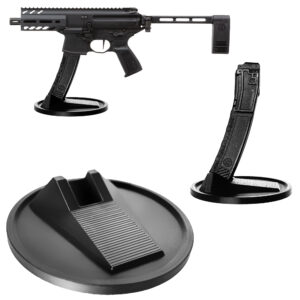
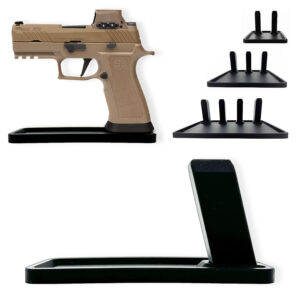
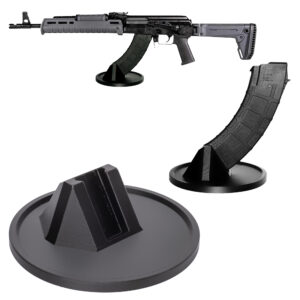


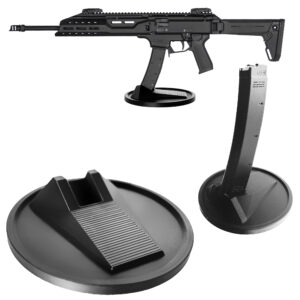
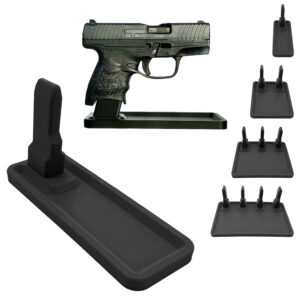

Colt
Colt M4 Carbine
Colt LE6920
Colt AR-15 A4
Daniel Defense
DDM4 V7
DDM4 V9
DDM4 V11
DDM4 ISR (Integrally Suppressed Rifle)
Smith & Wesson (S&W)
M&P15 Sport II
M&P15 Tactical
M&P15T
Bravo Company Manufacturing (BCM)
BCM Recce-16
BCM Recce-14
BCM MCMR Series
Aero Precision
M4E1 Series
AC-15
AR15 Pistol (Various Configurations)
Ruger
Ruger AR-556
Ruger SR-556
Ruger AR-556 MPR (Multi-Purpose Rifle)
Springfield Armory
Saint Victor
Saint Edge
Saint AR-15
PSA (Palmetto State Armory)
PSA PA-15
PSA AR-V
PSA Jakl (AR Pistol)
FN America
FN 15 Tactical Carbine
FN 15 Patrol
FN 15 DMR
Wilson Combat
Recon Tactical
Super Sniper
Protector Carbine
SIG Sauer
SIG M400 Tread
SIG M400 Elite
SIG M400 SDI
LWRC International
IC DI (Direct Impingement)
IC SPR
IC A5
Bushmaster Guns
XM-15 QRC
Bushmaster MOE
XM-15 Patrolman
Rock River Arms
LAR-15 Entry Tactical
LAR-15 Predator
LAR-15 Elite Comp
Stag Arms
Stag 15 Tactical
Stag 15L (Left-Handed Models)
Stag 15 Valkyrie
Noveske Rifleworks
Noveske Gen 4 N4
Noveske Space Invader (AR Pistol)
Noveske Recon
Anderson Manufacturing
AM-15 Optic Ready
AM-15 M4 Carbine
AM-15 Precision Rifle
Adams Arms
AA-15 Piston Rifle
P2 AARS (Adams Arms Rifle Series)
Black Rain Ordnance
SPEC15 Series
BRO Predator
Fallout 15
Diamondback Guns
DB15 Series
DB15CCMLB
DB15EB
Del-Ton Inc.
DTI-15
Del-Ton Echo 316H
Sierra 316M
Windham Weaponry
Windham SRC
Windham VEX-SS
Windham RMCS-4 (Caliber Conversion System)
Christensen Arms
CA-15 G2
CA-15 Recon
CA-15 Titanium Edition
Patriot Ordnance Factory (POF-USA)
Renegade Plus
P415 Edge
Revolution DI
LaRue Tactical
PredatAR
OBR (Optimized Battle Rifle)
LaRue Stealth 2.0
Battle Arms Development
Workhorse Patrol Carbine
BAD556-LW (Lightweight)
Authority Elite Rifle
Faxon Guns
Ascent AR-15
FX-19 (AR Pistol)
Streamline Ultralight Series
KE Arms
KE-15 SLT (Super Lightweight Tactical)
KE-15 Scout Carbine
Primary Weapons Systems (PWS)
MK1 MOD 2-M
MK116 PRO
MK107 (Piston AR Pistol)
ZEV Technologies
ZEV Core Elite Rifle
ZEV AR15 Billet Rifles
Franklin Armory
BFSIII AR-C1
Militia Model
F17-L (Chambered in .17 WSM)
Seekins Precision
SP15 DMR
NX15 Skeletonized Rifle
Havak Bravo
Aero Precision (Additional Models)
EPC-9 (Pistol Caliber ARs)
VG6 AR Rifles
Barrett Guns
REC7 DI
REC7 Gen II
CMMG
MK4 RCE
Resolute 300
Banshee (AR Pistol)
DPMS Panther Arms
Panther Oracle
Panther LR-308
H&K (Heckler & Koch)
HK MR556A1
HK416 (Military Variant)
Rock Island Armory (Armscor)
VR-80 Tactical AR (Shotgun AR Platform)
Troy Industries
Troy SPC-A3
Troy PAR (Pump Action AR)
Wilson Tactical
Tactical Recon AR
Protector Series
F1 Guns
FDR-15 Skeletonized Rifle
BDRx-15 Series
Juggernaut Tactical
JT-15
JT-10 Precision Rifle
AeroSurplus
Surplus AR-15 Rifles (Budget Models)
Thunder Tactical
AR-15 Basic Carbine
Tactical Builder Sets
Radical Guns
RF-15
Forged AR-Series
Dark Storm Industries
DS-15 Featureless Rifles
DS-10 Typhoon
DRD Tactical
Paratus
Aptus AR Rifles
Bear Creek Arsenal
BCA-15
AR Complete Upper Builds
Aero Survival Rifles (ASI)
ASR Tactical Series
Tactical Edge
WARFIGHTER Series
AR-15 Lightweight Rifles
Lone Star Armory
TX15 DMR
TX15 Carbine
HERA Arms
HERA H7
HERA AR-15 Lower Builds
IWI (Israeli Weapon Industries)
Zion-15
DRD Tactical
Tactical Modular Rifles
Quick-Takedown Rifles
V Seven Weapons
1776 Rifle
Hyperlite Rifle
Core Rifle Systems
Core15 Tac III
Core15 Patrol Rifle
Armalite (Original AR-15 Creator)
M15 Tactical
M15 A4 Carbine
DEF15 (Defensive Sporting Rifle Series)
PSA (Palmetto State Armory Additional Models)
PSAK-47 Hybrid (AR-AK Style Hybrid)
PSA Dagger (Pistol Caliber Configurations)
Odin Works
OTR-15
Odin Recon Rifle
Maxim Defense
MDX-508 PDX (Compact AR Pistol)
MDX-510 Rifle